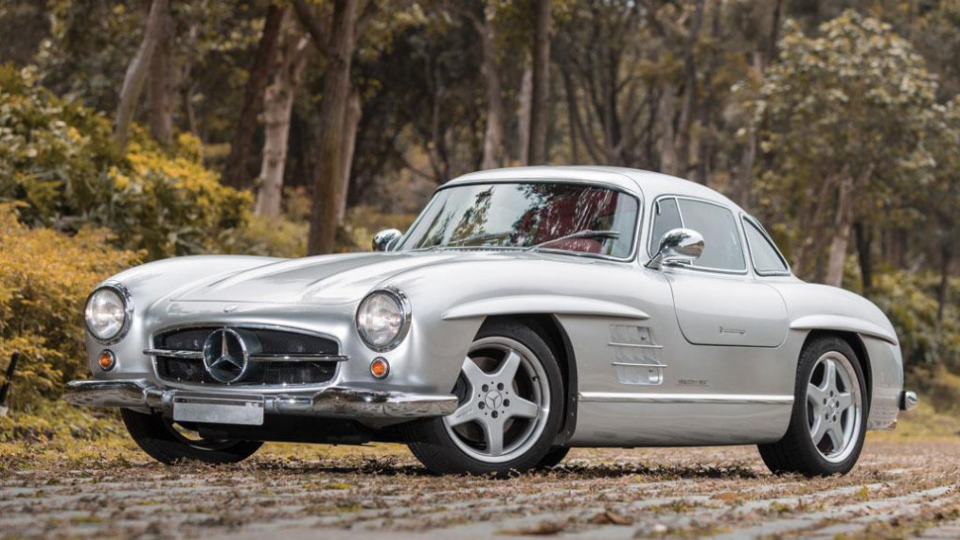Few industrial design origins garner as much respect as German engineering. Exemplifying this claim is the aesthetic charm of Mercedes vehicles and the mechanical brilliance of their complex parts and systems. In particular, the Mercedes-Benz coupes of the 1960s and 70s remain textbook examples of masterful automobile and parts manufacturing. They remain in high demand by collectors and enthusiasts worldwide.
However, the never ending popularity of the W113, better known as the Mercedes SL or Pagoda SL, and similar early model Mercedes-Benz automobiles, has led to an offshoot artform: “restomod.” Restomod experts such as Mechatronik, make it their mission to combine the best aspects of past and current Mercedes Benz engineering.

The concept is simple enough to understand: start off with a less-than-mint early-model Mercedes-Benz – a high mileage 280SL, perhaps – with a relatively preserved body and frame. However, rather than seeking out OEM parts for the older vehicle, instead they buy and install modern genuine Mercedes Benz parts that’re fitted for the classic models. The result, in theory, is the perfect blend of old and new.

In many cases, the decision to restomod a vintage Mercedes coupe is one of practicality as much as it is an example of experimental automobile engineering. Genuine OEM parts for early-model Mercedes Benz coupes are very difficult to find; and those vintage Mercedes parts certainly aren’t cheap if they’re found.
Yet Mercedes restomod parts enthusiasts are the first to tell you the decision is more than merely a consequence of limited supply of OEM parts. Replacing Mercedes engine and transmission parts with the automaker’s newer technology gives the advantage of several decades of automobile design breakthroughs. As much as we want to live in a world where the classic cars of yore are the end all be all of automobiles, the reality is that car tech continues to rapidly evolve, improving upon those old ways of doing things.
Of course, there are plenty of folks who despise the concept of “restomod” regardless of the perceived benefits. Some may call them “purists,” these car collectors and motorheads will refuse to call a car by its original make and model once a restomod has been undertaken. “It’s not the same car!” is the usual sound byte heard.
But truly, there is no “wrong” way to look at automobile restoration and parts modifications – it’s a matter of personal preference. These so-called purists might just be enlightened by the thought experiment known as “the Ship of Theseus.” It goes something like this: imagine a wooden ship in your head. Over the years, a plank here and a plank there get destroyed and replaced. Eventually, every piece of the ship eventually gets replaced. Is it still the same ship, or is it a whole new one?
Once an original part of a car deteriorates and needs replacing, notions of the car being “original” are instantly challenged, even if the replacement part is genuine OEM. However, the ultimate decision as to whether or not the vehicle stays “original” is ultimately up to the individual, as the aforementioned thought experiment illustrates.
The important thing to remember about restomod parts, regardless of the way you feel about its alleged infringement on the vintage car concept, is that the new and improved car parts must come from a manufacturer with a reputation of excellence. The genius of German engineering showcased by Mercedes boils down to an exceptionally-low tolerance for discrepancies in their parts fitments. While your more economical carmaker tolerates a millimeter difference from one car part to the next, Mercedes ensures this is reduced down to mere fractions of a millimeter between Mercedes parts. In short, the higher quality auto parts manufacturer must follow more stringent guidelines to preserve such consistency.
Almost 50 years later, the Mercedes-Benz coupes of the late-1960s and early-70s are still head-turning examples of incredible automotive engineering. Whether restomod Mercedes parts tamper with this perceived perfection or make the vehicle better depends on who you ask.
